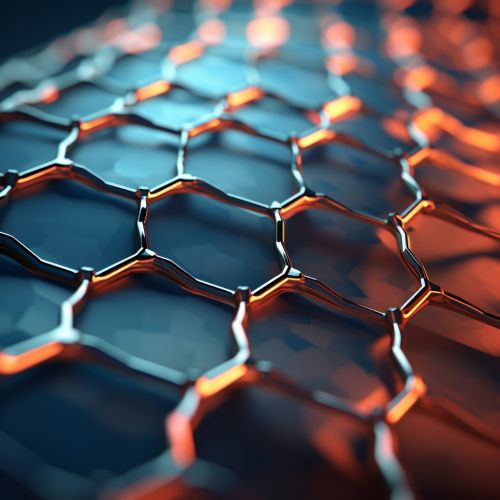Graphene in Electronics and Sensing
Introduction
Graphene is a two-dimensional, single-layer sheet of carbon atoms arranged in a hexagonal lattice. It was first isolated in 2004 by Andre Geim and Konstantin Novoselov at the University of Manchester, who were awarded the Nobel Prize in Physics in 2010 for their groundbreaking work. Since then, graphene has been the subject of intense research due to its unique properties, including its exceptional strength, thermal conductivity, and electrical conductivity. These properties make graphene a promising material for use in electronics and sensing technology.


Properties of Graphene
Graphene is the thinnest compound known to man at one atom thick, and also incredibly strong - approximately 200 times stronger than steel. On top of that, graphene is an excellent conductor of heat and electricity and has interesting light absorption abilities. It is truly a material that defies the laws of physics as we know them.
Electrical Properties
Graphene's electrical properties are particularly relevant to its potential applications in electronics. It has a very high electron mobility, meaning that electrons can move through it very quickly. This is partly due to the fact that graphene's electrons behave as if they have no mass, a phenomenon known as Dirac fermion behavior. As a result, graphene can support very high current densities, making it an excellent conductor.
Mechanical Properties
In addition to its electrical properties, graphene's mechanical properties also make it a promising material for electronics. It is extremely strong and flexible, and it is also transparent, which could make it useful in applications such as touch screens and light-emitting diodes (LEDs).
Graphene in Electronics
Graphene's unique properties make it a promising material for a wide range of electronic devices. Its high electron mobility could potentially lead to faster and more energy-efficient transistors than those currently used in computers. In addition, its transparency and flexibility could make it an ideal material for flexible displays.
Transistors
One of the most promising applications of graphene in electronics is in the development of transistors. Transistors are the basic building blocks of most electronic devices, and the speed at which they can switch on and off determines the speed of the device. Because of its high electron mobility, graphene could potentially be used to create transistors that are faster and more energy-efficient than those currently in use.
Flexible Displays
Another potential application of graphene in electronics is in the development of flexible displays. Because graphene is both transparent and flexible, it could potentially be used to create displays that can be bent or folded. This could lead to the development of new types of devices, such as foldable smartphones or wearable devices with flexible screens.
Graphene in Sensing
In addition to its potential applications in electronics, graphene's unique properties also make it a promising material for sensing technologies. Its high surface-to-volume ratio makes it extremely sensitive to changes in its environment, making it an excellent material for sensors.
Gas Sensors
One potential application of graphene in sensing is in the development of gas sensors. Because of its high surface-to-volume ratio, graphene can be extremely sensitive to the presence of gas molecules. This could potentially lead to the development of gas sensors that are more sensitive and faster than those currently in use.
Biosensors
Another potential application of graphene in sensing is in the development of biosensors. Biosensors are devices that use biological molecules to detect the presence of specific chemicals or substances. Because of its high surface-to-volume ratio and its ability to conduct electricity, graphene could potentially be used to create biosensors that are more sensitive and faster than those currently in use.
Challenges and Future Directions
Despite the promise of graphene in electronics and sensing, there are still many challenges to be overcome before these applications can become a reality. One of the main challenges is the difficulty of producing high-quality graphene in large quantities. Currently, most methods of producing graphene result in small flakes of the material, which are not suitable for many applications. In addition, while graphene's properties make it a promising material for electronics and sensing, it is still not clear how best to utilize these properties to create effective devices.
Despite these challenges, research on graphene continues to progress, and it is likely that we will see more and more applications of this material in the future. With its unique properties and potential applications, graphene is a material that is set to revolutionize the fields of electronics and sensing.
